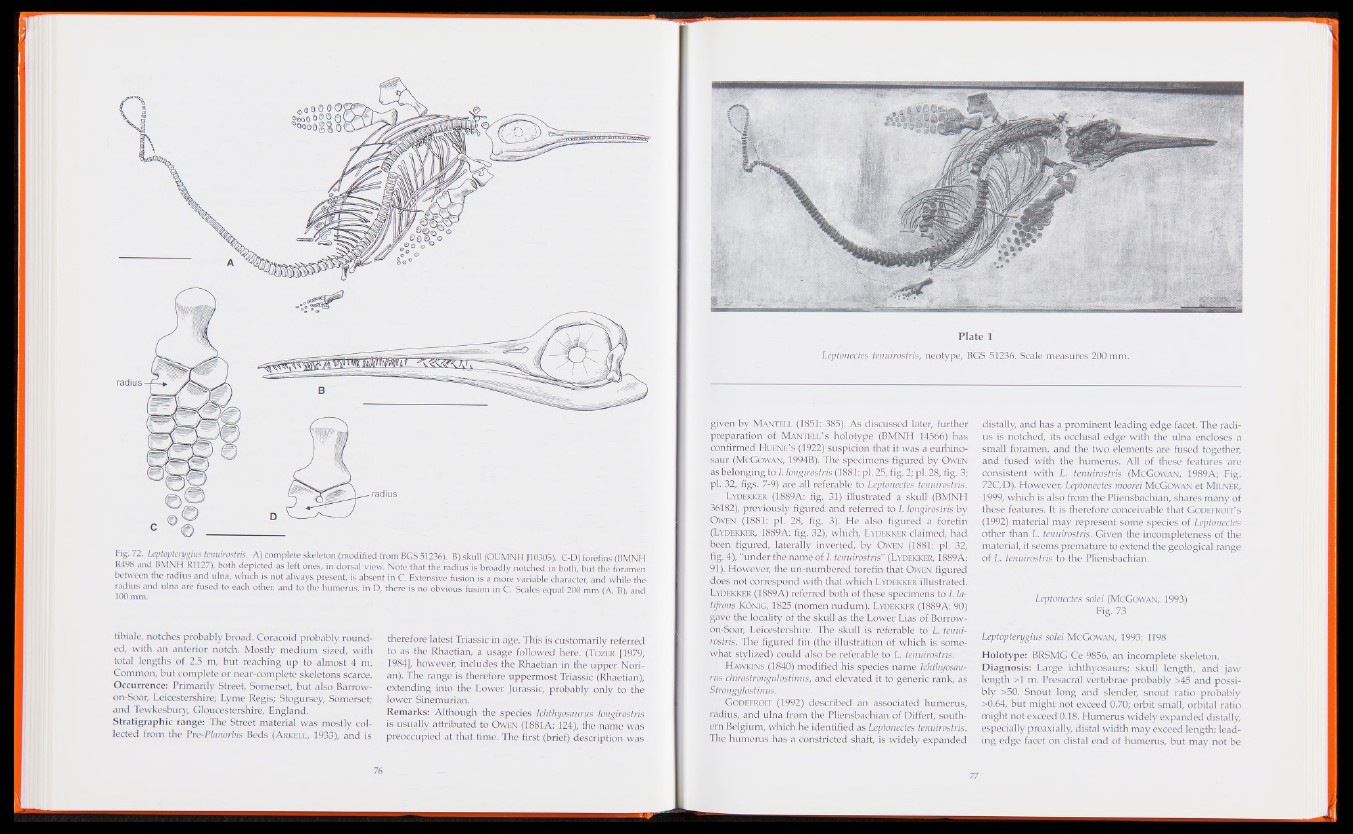
Fig. 72. Leptopterygius tenuirostris. A) complete skeleton (modified from BGS 51236). B) skull (OUMNH J10305). C-D) forefins (BMNH
R498 and BMNH R1127), both depicted as left ones, in dorsal view. Note that the radius is broadly notched in both, but the foramen
between the radius and ulna, which is not always present, is absent in C. Extensive fusion is a more variable character, and while the
radius and ulna are fused to each other, and to the humerus, in D, there is no obvious fusion in C. Scales equal 200 mm (A, B) and
100 mm.
tibiale, notches probably broad. Coracoid probably rounded,
with an anterior notch. Mostly medium sized, with
total lengths of 2.5 m, but reaching up to almost 4 m.
Common, but complete or near-complete skeletons scarce.
Occurrence: Primarily Street, Somerset, but also Barrow-
on-Soar, Leicestershire; Lyme Regis; Stogursey, Somerset;
and Tewkesbury, Gloucestershire, England.
Stratigraphic range: The Street material was mostly collected
from the Pre-Planorbis Beds (Arkell, 1933), and is
therefore latest Triassic in age. This is customarily referred
to as the Rhaetian, a usage .followed here. (Tozer [1979,
1984], however, includes the Rhaetian in the upper Nori-
an). The range is therefore uppermost Triassic (Rhaetian),
extending into the Lower Jurassic, probably only to the
lower Sinemurian.
Remarks: Although the species Ichthyosaurus longirostris
is usually attributed to Owen (1881A: 124), the name was
preoccupied at that time. The first (brief) description was
Plate 1
Leptonectes tenuirostris, neotype, BGS 51236. Scale measures 200 mm.
given b y Mantell (1851: 385). As discussed later, further
preparation o f Mantell’s holotype (BMNH 14566) has
confirmed Huene’s (1922) suspicion that it was a eurhino-
saur (McGowan, 1994B). The specimens figured by Owen
as belonging to I. longirostris (1881: pi. 25, fig. 2; pi. 28, fig. 3;
pi. 32, figs. 7-9) are all referable to Leptonectes tenuirostris.
L ydekker (1889A: fig. 3 1) illustrated a skull (BMNH
36182), previously figured and referred to I. longirostris by
Owen (1 881: pi. 2 8 , fig. 3 ). He also figured a forefin
(Lydekker, 1889A: fig. 32), which, Lydekker claimed, had
been figured, laterally inverted, by Owen (1881: pi. 32,
fig. 4), “under the name of I. tenuirostris” (Lydekker, 1889A:
91). However, the un-numbered forefin that Owen figured
does not correspond with that which L ydekker illustrated.
Lydekker (1889A) referred both of these specimens to I. la-
tifrons König, 1825 (nomen nudum). L ydekker (1889A: 90)
gave the locality of the skull as the Lower Lias of Borrow-
on-Soar, Leicestershire. The skull is referable to L. tenuirostris.
The figured fin (the illustration of which is somewhat
stylized) could also be referable to L. tenuirostris.
H awkins (1840) modified his species name Ichthyosaurus
chirostrongulostinus, and elevated it to generic rank, as
Strongylostinus.
Godefroit (1992) described an associated humerus,
radius, and ulna from the Pliensbachian of Differt, southern
Belgium, which he identified as Leptonectes tenuirostris.
The humerus has a constricted shaft, is widely expanded
distally, and has a prominent leading edge facet. The radius
is notched, its occlusal edge with the ulna encloses a
small foramen, and the two elements are fused together,
and fused with the humerus. All of these features are
consistent with L. tenuirostris (McGowan, 1989A; Fig.
72C,D). However, Leptonectes moorei McGowan et Milner,
1999, which is also from the Pliensbachian, shares many of
these features. It is therefore conceivable that Godefroit’s
(1992) material may represent some species of Leptonectes
other than L. tenuirostris. Given the incompleteness of the
material, it seems premature to extend the geological range
of L. tenuirostris to the Pliensbachian.
Leptonectes solei (McGowan, 1993)
Fig. 73
Leptopterygius solei McGowan, 1993: 1198
Holotype: BRSMG Ce 9856, an incomplete skeleton.
Diagnosis: Large ichthyosaurs; skull length, and jaw
length >1 m. Presacral vertebrae probably >45 and possibly
>50. Snout long and slender, snout ratio probably
>0.64, but might not exceed 0.70; orbit small, orbital ratio
might not exceed 0.18. Humerus widely expanded distally,
especially preaxially, distal width may exceed length; leading
edge facet on distal end of humerus, but may not be